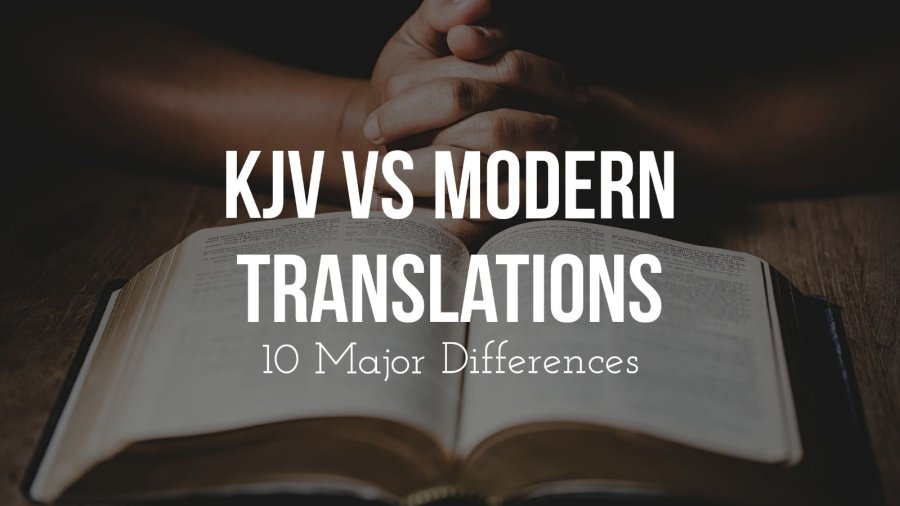The King James Bible (KJV) was issued by the King of England, King James 1st, in 1604 and first published in 1611. Fifty-four scholars worked on Latin, Hebrew, and Greek manuscripts and texts to compose this version of the Bible. The king’s motivation for publishing such a Bible was to quell the disagreements over the Church of England’s rulings and unite different groups. At that time, the Puritans were splintering off the Church of England. So King James hoped the new English Bible would improve his reputation, which was floundering.
As the only available English Bible then, it changed the lives of individuals and families who bought it. Parents taught children to read and recorded family trees on the front pages. This translation was carried by those fleeing persecution in England during the 17th century to the New World. Today, it’s one of the favorite versions for Christians and is considered one of early England’s most significant literary accomplishments. You may be curious about the KJV version of the Bible compared to other translations. Are modern versions as accurate? Which one should you read? Here are some interesting details to answer your questions about the KJV versus other modern translations.
What are the most popular modern translations of the Bible?
The Bible is a popular book in the United States. In June 2024, a survey of English translations of the Bible in the United States found the most popular translations of the Bible include
- King James Bible-55%
- New International Version Bible-19%
- New Revised Standard Bible-7%
- New American Bible-6%
- The Living Bible-5%
- Other translations-8%
NEW INTERNATIONAL VERSION (NIV)
The KJV version strongly affected the NIV Bible, first published in 1978 and revised again in 1984 and 2011. It’s a meaning-based and form-based translation, and today, it’s a popular English Bible version for study and worship.
NEW REVISED STANDARD VERSION (NRSV)
This Bible translation was a revision of the Revised Standard Bible. The NRSV is very readable, using familiar phrases and words in the KJV. It’s also a form-based and meaning-based translation. The NRSV is used for Bible study in colleges and seminaries.
NEW AMERICAN STANDARD BIBLE (NASB)
The NASB, published in the 1960s, is considered an English formal translation of the Bible. It’s suggested that it’s one of the most verbatim types of translation. It’s a good study Bible if you want a translation taken in form from the original Greek and Hebrew. A new edition of this Bible came out in 1995.
NEW LIVING TRANSLATION (NLT)
The NLT is a meaning-based translation based on the Living Bible, a popular translation created by paraphrasing English in the 1970s. Creators of this version compared the Living Bible to original texts and made changes. Because of this, the NLT isn’t a true translation but more of a paraphrased version written in easy-to-read phrases and language. It suits young people who have trouble reading a more formal translation. It wouldn’t be a good study Bible for seminary students.
Readability differences between the KJV and modern translations
The King James Version is a word-by-word translation, making it accurate to the original texts and manuscripts. It’s been reprinted, and its spelling has been updated numerous times. Today’s version is modified from the 1769 KJV edition. It’s considered the most significant book in the modern English language. Some suggest it’s helpful to read the
KJV Bible, along with other translations for best readability. It’s considered the most owned version of the English Bible in the United States today.
Differences in translations between the King James and modern translations
There are several different ways of translating the Greek, Aramaic, and Hebrew texts of the Bible. Here are three main ways to translate for the different versions.
Thought by thoughts- The goal of this translation is to use a sentence or thought meaning to make it easier for English readers to understand.
Word-for-Word- Every word is translated based on the word used when the translation was created.
Paraphrase- This method rephrases scripture in more modern language and terms.
Bible translations are also categorized depending on their philosophy, which is more formal or dynamic. Formal translations are word-for-word, while dynamic translations are through-for-thought.
Both have pros and cons.
For instance, word-for-word translations use idioms and phrases used in Hebrew and Greek, so they may not translate well to the English language, which causes them to lack flow in reading. All languages have grammatical differences, so some words may not have a definite English equivalent translation. Plus, translating from Hebrew to Greek could be clearer. Word-for-word translations may sacrifice words to provide a more modern phrase that English readers will understand.
Bible verse comparisons
Here are examples of the verse John 3:16, which you might read in various Bible translations.
King James Version
For God so loved the world, that he gave his only begotten Son, that whosoever believeth in him should not perish, but have everlasting life.
New International Version
For God so loved the world that he gave his one and only Son, that whoever believes in him shall not perish but have eternal life.
New Revised Standard Version
For God so loved the world that he gave his only Son, so that everyone who believes in him may not perish but may have eternal life.
New American Standard Bible
For God so loved the world, that He gave His only begotten Son, that whoever believes in Him shall not perish, but have eternal life.
New Living Translation
For this is how God loved the world: He gave his one and only Son, so that everyone who believes in him will not perish but have eternal life.
Revisions to the King James Version of the Bible
In 1611, the original publication of the KJV occurred. Since then, it’s been revised numerous times. The revisions were in.
Revisions in 1769
This version contained more italics and small changes to the spelling, capitalization, text, and punctuation.
Example: Matthew 13:6 “had not root” changed to “had no root.”
Revisions in 1881
An English Revised Version (ERV) was made. It was the only official authorized version of the KJV. A group of scholars met to formulate 30,000 changes.
Revisions in 1982
The New King James Version was born. It was a revision to the KJV, which updated outdated English words.
Target audience
In 1611, the KJV’s target audience was the general public, even though most people couldn’t read. Today, it’s a favored translation for Baptists, Presbyterians, Episcopalians, and Pentecostals. More modern translations’ target audiences vary.
English Standard Version (ESV)
It was first published in 2001 and updated in 2016, this translation is more formal and draws from up-to-date scholarly findings. It’s a popular version among Protestant churches.
NEW AMERICAN BIBLE
The NAB was published in 1970. It’s a meaning-based translation It was created primarily for Roman Catholics.
NEW INTERNATIONAL VERSION (NIV)
The NIV is a newer translation, heavily influenced by the King James Version. It was first published in 1978 and revised in 1984 and 2011. It combines meaning-based and form-based translation. Its target audience is conservative and traditional denominations.
New Living Translation (NLT)
This meaning-based translation was written similarly to the Living Bible, a 1971 paraphrased English Bible. Despite this, it’s considered a true translation. It’s a good version for adults and young people who struggle with more formal or traditional language.
REVISED ENGLISH BIBLE (REB)
The Revised English Bible is another favorite translation. It’s considered to be an innovative and bold translation. It’s said to have a British tone, making it accessible to international audiences and popular for public reading.
REVISED STANDARD VERSION (RSV)
It was created in 1952 and revised in 1977. It’s considered an updated American Standard, a revision of the King James Version. It’s used primarily by Protestant churches, but a Roman Catholic version was published in 1966. This translation is also popular in Eastern Orthodox churches.
Pros and cons with choosing modern translations and KJV translations
Here are the pros and cons of several different Bible translations.
English Standard Version (ESV)
- Pros: This version is based on the KJV and read by people who like the KJV Bible. It flows well, is understandable, and is a good study Bible. It’s written at a 7th-grade level and appeals to most individuals. It uses theological terms of older translations.
- The cons: The language can seem archaic at times. It’s not a good public reading version, and this version loses some of the texts’ artistic beauty. Those against this version say this version’s footnotes show a certain theological learning.
New American Standard Bible (NASB)
- Pros: This is a literal translation. Language like “thee” and “thou” have been updated. Translators used the best and oldest Greek manuscripts to update the translation.
- Cons: It’s not considered readable but perceived as stiff or stilted.
New King James Version (NKJV)
- Pros: The NKJV maintains the accuracy of the KJV. People who read the King James Version like the NKJV. It stays true to the Greek text when it comes to pronouns.
- Cons: It often uses archaic languages and expressions; critics say accuracy needs to be improved because it uses text-based translations.
New International Version (NIV)
- Pros: Readable version, one of the most popular modern translations today. The young audience reads it because it’s easily understandable.
- Cons: It’s suggested that this translation has given up accuracy in an effort to be readable. The NIV is a phrase-by-phrase translation rather than a word-for-word. It uses gender-inclusive pronouns.
Which one should I choose?
There are many Bible versions out there. So, how do you choose one to read and study? Here are some suggestions for choosing a translation.
- Remember, there is no top translation. There are many good choices to choose from.
- Choose a translation that’s considered accurate to the Hebrew and Greek texts. It should be accurate.
- Choose a translation you can read. It should be clear in meaning and understandable.
- If you want to study the Bible, choose a translation that is good for that. It should include commentary and cross-references that make study easy.
- Ask your pastor or ministry leader to give you some suggestions.
Other things to consider when you’re choosing a Bible translation.
- Do you want footnotes, introductions, and quotes from commentaries?
- Do you want a version that has Jesus’ words in a red font?
- Do you want a Bible to include maps?
- Do you want a Bible with concordance?
Hopefully, this article has addressed our questions about the different Bible translations and how they were created. Ultimately, the fact that we have an abundance of different English Bible translations is a huge blessing. Most of these are accurate, trusted versions. We must not forget that one in five people in the world would love to have even one copy of a Bible translation in their language. It’s humbling to think that 1.5 billion people in the world are without a Bible. Let us gratefully choose a translation that will help us grow in our love for the Lord and others.

